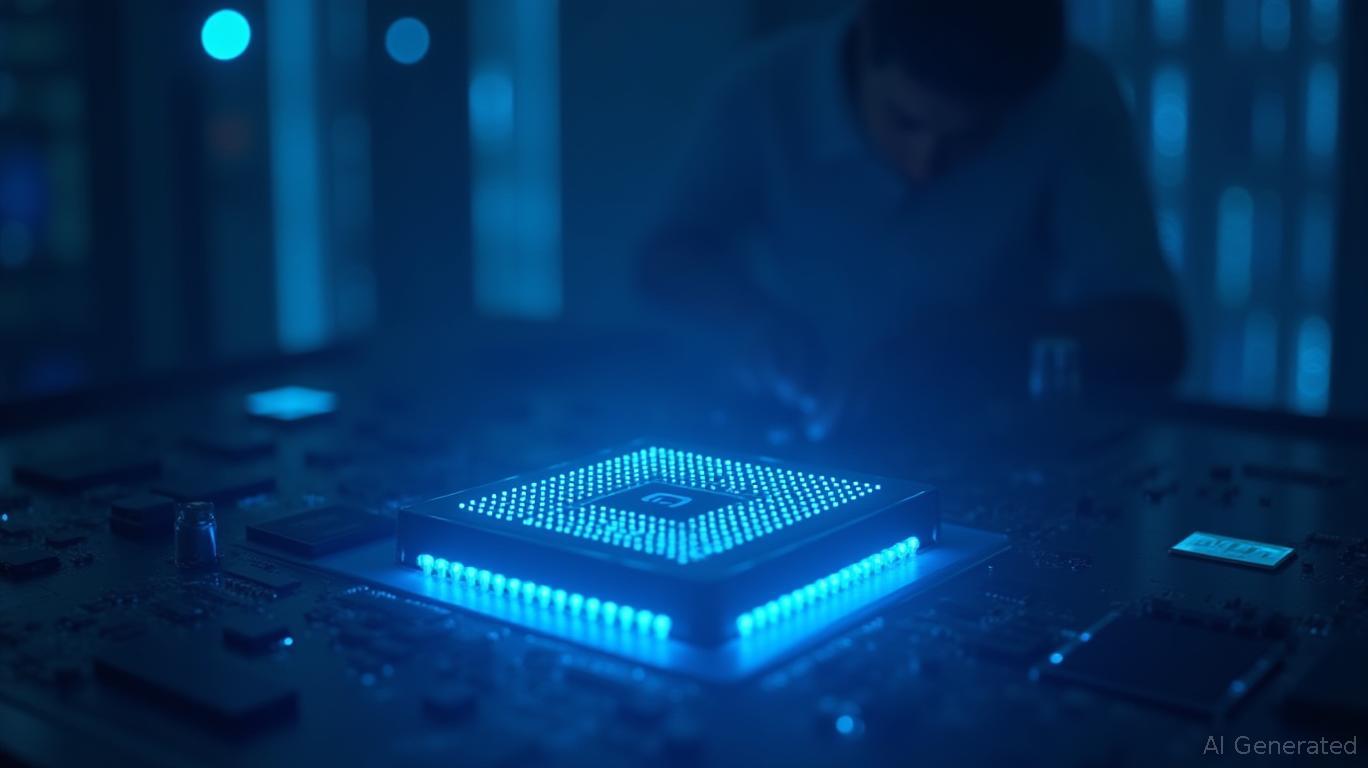AMD's AI Chip Offensive: A Game-Changer in Semiconductor Supremacy?
The semiconductor war isn't just about speed—it's about cost, scale, and who can dominate the AI infrastructure gold rush. For years,
has reigned supreme in the AI chip market, but AMD is now launching a full-frontal assault with claims of 40% better cost efficiency and partnerships that could redefine the industry. Let's dive into the numbers and why this battle could reshape your portfolio.
The Market Share Tipping Point: 14.3% vs. 85.2%
According to IDC, NVIDIA holds 85.2% of the AI chip market as of 2025, while AMD claims just 14.3%. But here's the catch: AMD isn't playing by the old rules. The company is leveraging its Helios full-stack solutions—combining chips, software, and servers—to offer data centers a more cost-effective alternative. NVIDIA's dominance stems from its closed ecosystem (CUDA, Tensor Cores), but AMD's open approach could attract price-sensitive buyers.
The Cost Efficiency Edge: 40% More Bang for Your Buck
AMD's trump card is performance per dollar. Benchmarks show its MI300X and MI325X GPUs can process 40% more tokens per dollar than NVIDIA's H100 in large dense models like Llama3. For data centers, this means lower total cost of ownership (TCO). NVIDIA's H200 and Blackwell series excel in compute-bound tasks (e.g., chatbots), but AMD's chips dominate in memory-bound workloads (summarization, reasoning), where their high-bandwidth memory (HBM) gives them a 35x speed advantage.
This isn't just theory. Oracle has already adopted AMD's MI300X for its cloud infrastructure, citing cost savings. Meanwhile, OpenAI is testing AMD's hardware for specific models, signaling a potential shift in the AI cloud ecosystem.
The Software Struggle: Can AMD Catch Up?
Here's the rub: NVIDIA's CUDA ecosystem is a moat AMD must breach. While AMD's ROCm software is improving, it still lags in continuous integration (CI) coverage and numeric accuracy. For example, AMD's SGLang CI tests cover only 10% of NVIDIA's parity, risking adoption delays. NVIDIA's TensorRT-LLM also outperforms AMD's tools in some workloads, despite its complexity.
But AMD's $13 million R&D investment in internal clusters (versus $749 million in buybacks) is a red flag. To win, AMD must pour more resources into software—fast.
The Opportunity: A Long Play on AMD's Scalability
The bull case for AMD is simple: cost efficiency + partnerships = market share gains. If AMD can deliver its MI355X GPU (slated for late 2025) with software maturity, its TCO advantage could erode NVIDIA's 85%+ dominance. Data centers, hyperscalers, and cloud providers will gravitate toward the cheaper option, especially as AI models grow larger and hungrier for memory.
Wall Street's Skepticism: Valuation and Supply Risks
Bear arguments focus on AMD's valuation (P/E of 24 vs. NVIDIA's 38) and supply chain delays. The MI325X's late Q2 2025 rollout and TSMC's CoWoS packaging constraints (which favor NVIDIA) have already cost AMD market share. NVIDIA's GB200 NVL72 delays were minor by comparison.
But here's the kicker: AMD's stock trades at a 20% discount to NVIDIA's AI revenue multiples, even as its TCO advantage grows. This could be a buying opportunity if Helios systems and MI355X hit their targets.
Final Take: Go Long on AMD's Disruption
NVIDIA's reign isn't over yet, but AMD's offensive is real—and dangerous. The semiconductor world is shifting from “who has the fastest chip” to “who can deliver the cheapest, most scalable AI infrastructure.” AMD's full-stack play and partnerships with Oracle/OpenAI put it in position to steal share.
Investment advice:
- Buy AMD if you believe cost efficiency trumps proprietary ecosystems.
- Hold NVIDIA for near-term dominance but watch for valuation risks.
- Avoid overpaying: AMD's stock is still volatile; wait for dips before entering.
The AI chip war is just heating up. AMD's 14.3% share may seem small now, but in tech, market share shifts start with a 10% gain. This could be the year that changes.

Comments
No comments yet